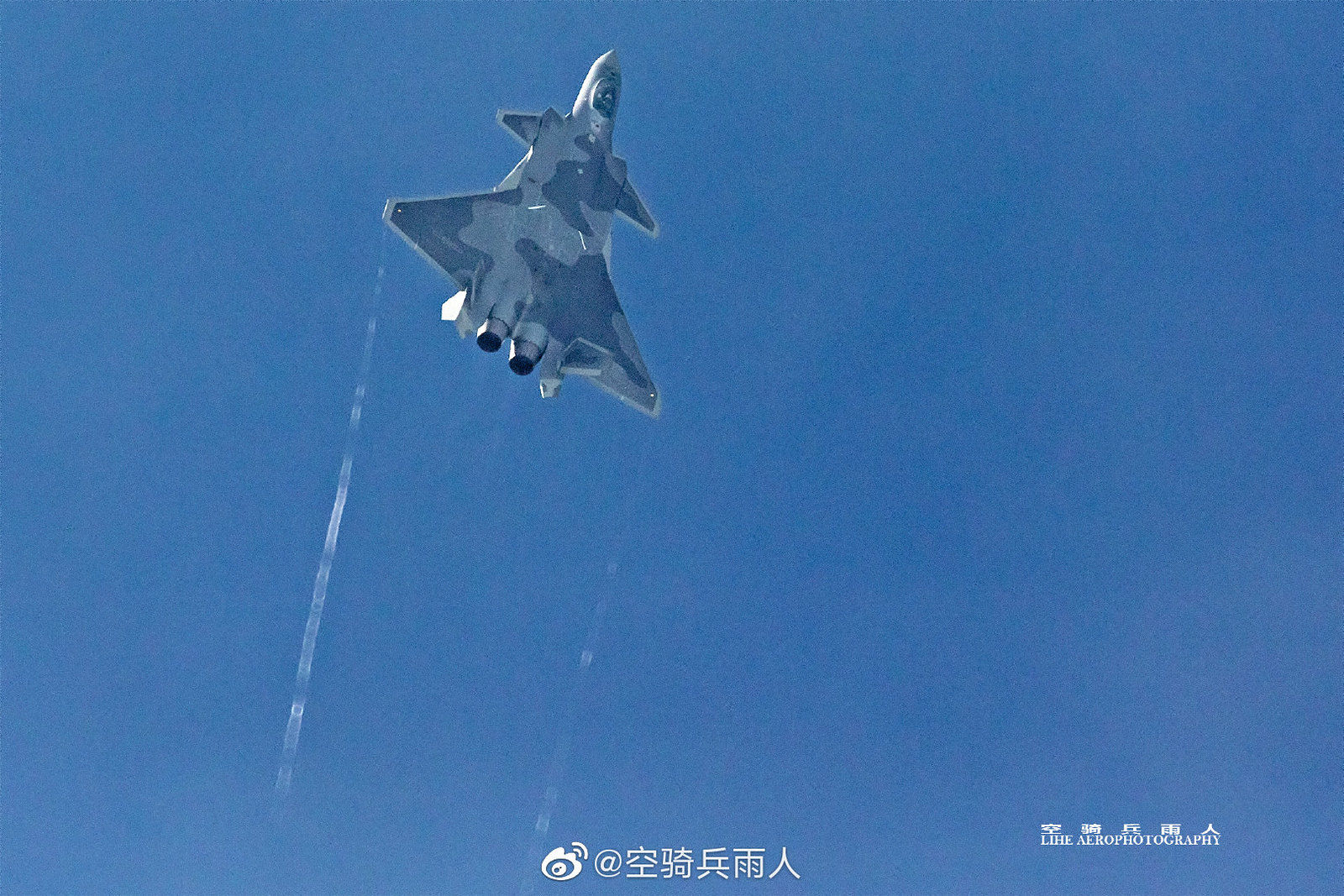I've been thinking about a command J-20 for a bit and while I was almost partisan to the idea of it supporting J-20s, here's the big problem: scale.
A command J-20 is not the equal of a normal J-20 when it comes to maneuverability, range, speed, and stealth by virtue of having a second operator. Moreover, a command J-20 is intrinsically more expensive than a normal J-20 due to the different occupant accommodations.
So, let's talk about an actual employment. Let's say you have a flight of 4 J-20s, of which one is a command variant.
Does having a 1:3 ratio between command J-20s and frontline pilots work? Well, you're paying more because now you need 5 pilots per 4 planes instead of 4 pilots per 4 planes and the 4th plane is now more expensive. The command J-20, unlike the other J-20s, can't risk itself because it now carries a precious cargo.
What you're doing here is that you're removing about 25-43% of the combat capability of a J-20 flight because you believe that the command J-20 can add more by virtue of providing the commander with command and control facilities on the front line.
This is just shooting fish in a barrel at this scale.
Now let's move to a 中队, or a current PLAAF flight group. 8-10 planes. When you have 8-10 planes, the command and control needs are going to now be more complex, especially since there are now 7-9 pilots under the control of the commander. It looks way better than a flight.
Here, you can actually see that it might be good to have someone specifically manage these pilots at this size, but in reality the flight group is 2 flights with their own commanders. Someone might end up hanging back to protect the command J-20, which can take the capability efficiency from from a low 10-25% to something around 33-50%, around the same as with assigning a command J-20 to a flight.
At the next level, command J-20s start to make more sense. You have roughly 24 planes per brigade, composed of three flight groups with six flights total. But once you hit 24 planes per brigade, why not just bring a KJ-200/300/500/2000/3000 along? You definitely have enough planes in the air to protect them, and the larger radar (about 3x diameter) delivers far superior detection and imaging to a command J-20.
The only advantage at this point is not stealth, as the KJ-200 can be protected, but speed. The J-20s can presumably supercruise, but then what of the command J-20? Is it going to be able to keep up with the other J-20s?
A couple of points to add.
1. An AWACs is at high risk, even if it has an escort of 24 J-20s.
Look at how the Chinese Air Force has very long range SAMs and AAMs, with a range of 250KM+
2. Suppose a command J-20 is responsible for 10 drone fighters like the Kratos XQ-58 Valkyrie which is under development?
And/or even hundreds of smaller drones?
Presumably the drones are all conducting air-to-air, air-to-ground and electronic warfare missions.
And cheap drones means combat becomes attritional, which favours the side with huge numbers of drones, which all need to be directed.
So instead of a command J-20 reducing combat capability, it would be adding a lot more combat capability (via drones) to the air group.
It's not just the other J-20s that a command J-20 is responsible for.
3. The performance penalty of a command J-20 is probably only 5-10% less range.
But it doesn't have to spend as much time at afterburner as the other J-20s, which would be conducting most of the air-to-air combat.
Plus a command J-20 would presumably be hanging back to the rear. So it wouldn't need to travel as far, and the extra distanace means its stealthiness is still acceptable.
So my view is that *development of airborne combat drones* is what will drive a 2-seater Command J-20, with the other roles such as training and EW being insufficient reason.





